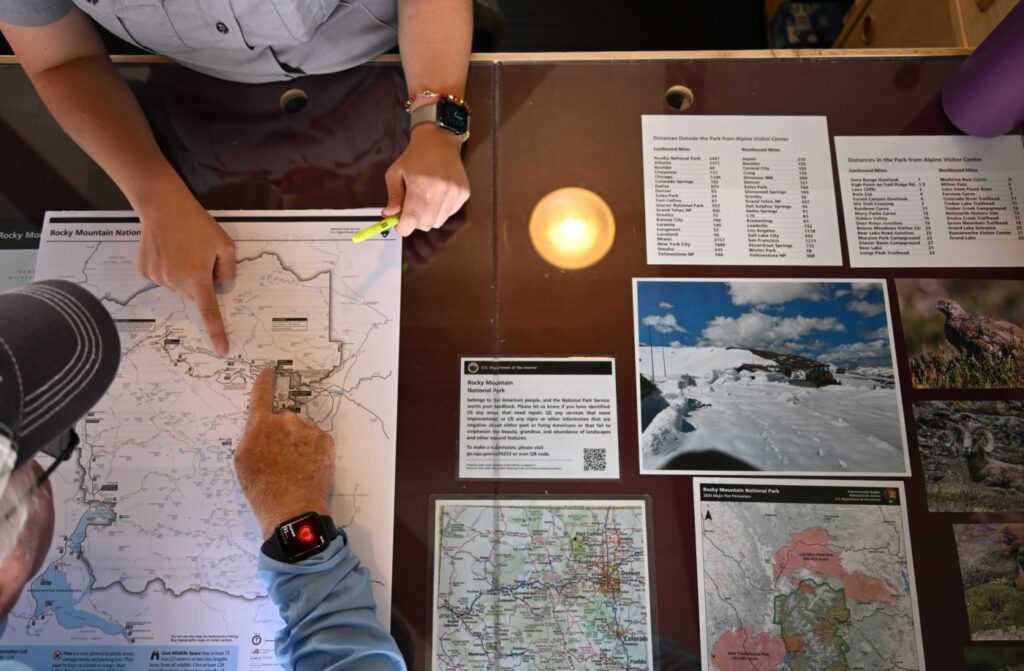
Rick Williams, leader of the American Indian group People of the Sacred Land, expressed shock upon discovering signs at the Sand Creek Massacre National Historic Site in Colorado that critics fear could lead to a whitewashing of history. The signs, mandated by Interior Secretary Doug Bergum on June 13, ask visitors to download a QR code and complete a survey. While the first two questions focus on site maintenance and service improvements, the third question has raised alarms by asking visitors to identify “signs or other information that are negative about either past or living Americans or that fail to emphasize the beauty, grandeur, and abundance of landscapes and other natural features.”
The signs have stirred controversy among various communities, including Japanese Americans, particularly at the Amache National Historic Site, the location of a World War II internment camp. Critics argue that this initiative could undermine the primary purpose of these sites, which is to educate the public about difficult historical truths.
Concerns Over Historical Integrity
Williams, whose ancestry is Oglala Lakota and Cheyenne, voiced his concerns about the implications of the new signs. “I was a little horrified, but I was scared, too,” he said. “Basically this gives the average citizen a license to determine what they believe the truth is, and defending it against somebody who has an opposing view could create hostility.”
Kirsten Leong, vice president of the non-profit Amache Alliance, echoed these concerns. “The way they are written seems to be more applicable to some of the bigger national parks that talk about natural beauty,” she stated. “That’s not the congressional purpose of places like Amache. In law, the purpose for the park… is about telling these hard historical stories.”
Political Backdrop and Executive Orders
The directive from Bergum follows an executive order signed by former President Trump titled “Restoring Truth and Sanity to American History.” Trump criticized efforts to “rewrite” history with what he described as ideologically driven narratives. The order calls for the identification of monuments and markers that “inappropriately disparage Americans past or living” or fail to highlight the natural beauty of the sites.
Interior Department land management bureaus, including the National Park Service, are tasked with implementing this order. The potential impact on the portrayal of historical events at sites like Sand Creek and Amache is a significant concern for historians and community leaders.
Financial Strains and Visitor Feedback
Beyond the controversy over historical portrayal, the signs have prompted visitors to express concerns about funding. Many have used the surveys to advocate for increased financial support for the parks. According to the National Parks Conservation Association, the National Park Service is facing $900 million in budget cuts as part of Trump’s proposed 2026 budget.
“This is the most extreme, unrealistic and destructive National Park Service budget a president has ever proposed in the agency’s 109-year history,” stated Theresa Pierno, chief executive of the National Parks Conservation Association.
Estee Rivera Murdock, executive director of the Rocky Mountain Conservancy, noted that visitor feedback consistently highlights the need for more funding and resources. “It’s hard to solicit feedback from folks to make changes if you don’t have any mechanism or budgets to make those changes,” she said.
Implications for Historical Sites
With the threat of budget cuts, there is concern that lesser-visited sites like Amache and Sand Creek could face closure. While Rocky Mountain National Park attracts millions of visitors annually, Amache and Sand Creek see far fewer, raising fears about their future viability.
“We believe in evidence-based history, which I think the parks are currently doing,” said Dawn DiPrince, chief executive of History Colorado. “I don’t think we should be changing that. I am even more concerned about the proposed funding cuts.”
Williams remains hopeful about the future of the Sand Creek Massacre site, emphasizing its sacred significance to Native Americans. “Of those 6,400 visitors, probably 6,000 were American Indians,” he said, “and they’re going to go there whether it’s a national park or not.”
The debate over these signs and the broader implications of funding cuts highlight the ongoing struggle to preserve historical integrity while addressing the financial and political challenges facing America’s national parks.







